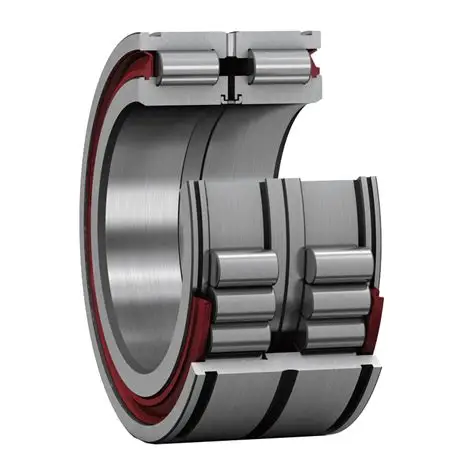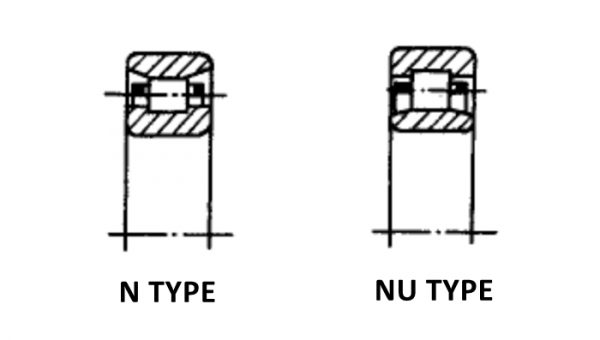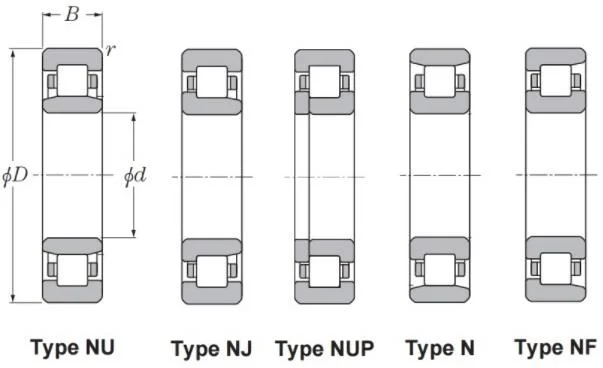Wishlist
The products are limited
The products are limited
When you think about bearings in industrial motors, deep groove ball bearings often come to mind first, accounting for a massive seventy percent of all motor bearing usage. But hot on their heels, making up a significant twenty percent of the total, are cylindrical roller bearings.
This means that together, deep groove ball bearings and cylindrical roller bearings constitute a whopping ninety percent of all bearings used in industrial motors. So, for any motor engineer, getting to grips with these two types is essentially understanding almost all bearings you'll encounter in the field.
As the name suggests, cylindrical roller bearings differentiate themselves from deep groove ball bearings by using cylindrical rollers as their rolling elements. Take a look at the image below to see what we mean:
Typically, a cylindrical roller bearing consists of an inner ring, an outer ring, and these cylindrical rolling elements. Interestingly, these bearings usually don't come with built-in dust shields or seals.

Let's break down the defining features of cylindrical roller bearings, especially when compared to their deep groove ball counterparts.
Unlike deep groove ball bearings, where the contact between the rolling element and raceway is a "point contact" (or a small elliptical area when considering metal elasticity), cylindrical roller bearings feature line contact. This means a larger contact area, giving cylindrical roller bearings a significantly greater load-carrying capacity. They're ready to handle heavier tasks!
With that increased contact area comes a trade-off: line contact generally generates more heat than point contact, and cylindrical roller bearings are also less efficient at dissipating that heat. Therefore, cylindrical roller bearings tend to generate more heat during operation than deep groove ball bearings, and their thermal reference speed is lower than comparable deep groove ball bearings.
Because they rely on line contact, cylindrical roller bearings are highly susceptible to stress concentration if the rollers become misaligned. This means they cannot tolerate eccentric loads. Their high sensitivity to misalignment makes them particularly vulnerable if the equipment's rotating shaft isn't perfectly aligned.
Based on their raceway designs, the most common types of cylindrical roller bearings found in industrial applications primarily include the following, as shown in the diagram:
In industrial motors, the NU and N types of cylindrical roller bearings are by far the most commonly used, with other types being extremely rare. So, we'll focus our attention on these two workhorses.
As you can see in the diagram, the NU type cylindrical roller bearing features an inner ring without flanges and an outer ring with flanges on both sides. The N type cylindrical roller bearing, conversely, has flanges on both sides of the inner ring and no flanges on the outer ring.
This structural difference highlights a key functional advantage: during operation, the inner and outer rings of these cylindrical roller bearings can achieve a certain amount of axial movement "friction-free" within the bearing itself. This makes both the NU and N types excellent choices for floating end bearings. Consequently, they are not suitable for use as fixed-end bearings.
The friction between the rolling elements and the raceway end faces in cylindrical roller bearings is primarily sliding friction. Ideally, we want to minimize this. When NU and N series cylindrical roller bearings are used as floating ends, this sliding friction is kept very low. This is also why other types of cylindrical roller bearings (even those with some positioning capability) are generally not recommended for use as fixed-end bearings in motors.

The structural differences between NU and N type bearings lead to a series of distinctions in their manufacturing and installation processes.
The NU type cylindrical roller bearing's inner ring raceway only requires machining on one end face, but its outer ring raceway needs machining on three end faces.
The N type cylindrical roller bearing is the opposite.
Engineers familiar with factory processes will quickly realize that the manufacturing cost of NU type cylindrical roller bearings is generally slightly higher than that of N type, and their manufacturing process requirements are also a bit more stringent. This is why some manufacturers designate the N type cylindrical roller bearing as a standard product.
The NU type cylindrical roller bearing offers easier installation. When installing the inner ring, you only need to heat a single inner ring, whereas with the N type, you need to heat the entire bearing assembly. Additionally, if you need to clean the ring that's heat-fitted onto the shaft, the NU type is simpler to clean and less prone to leaving contamination behind.

The cage in cylindrical roller bearings is typically made from one of three materials: steel, nylon, or brass. You can refer to bearing catalogs for their specific performance parameters.
A unique aspect to consider is how the different guidance methods of the cage can affect bearing performance. For more details, you can refer to articles discussing bearing cage guidance methods.
Please contact us at https://www.tfl-bearing.com/contact for any questions about bearings, and if you are choosing a roller bearing distributor, we would be happy to give you a quote.